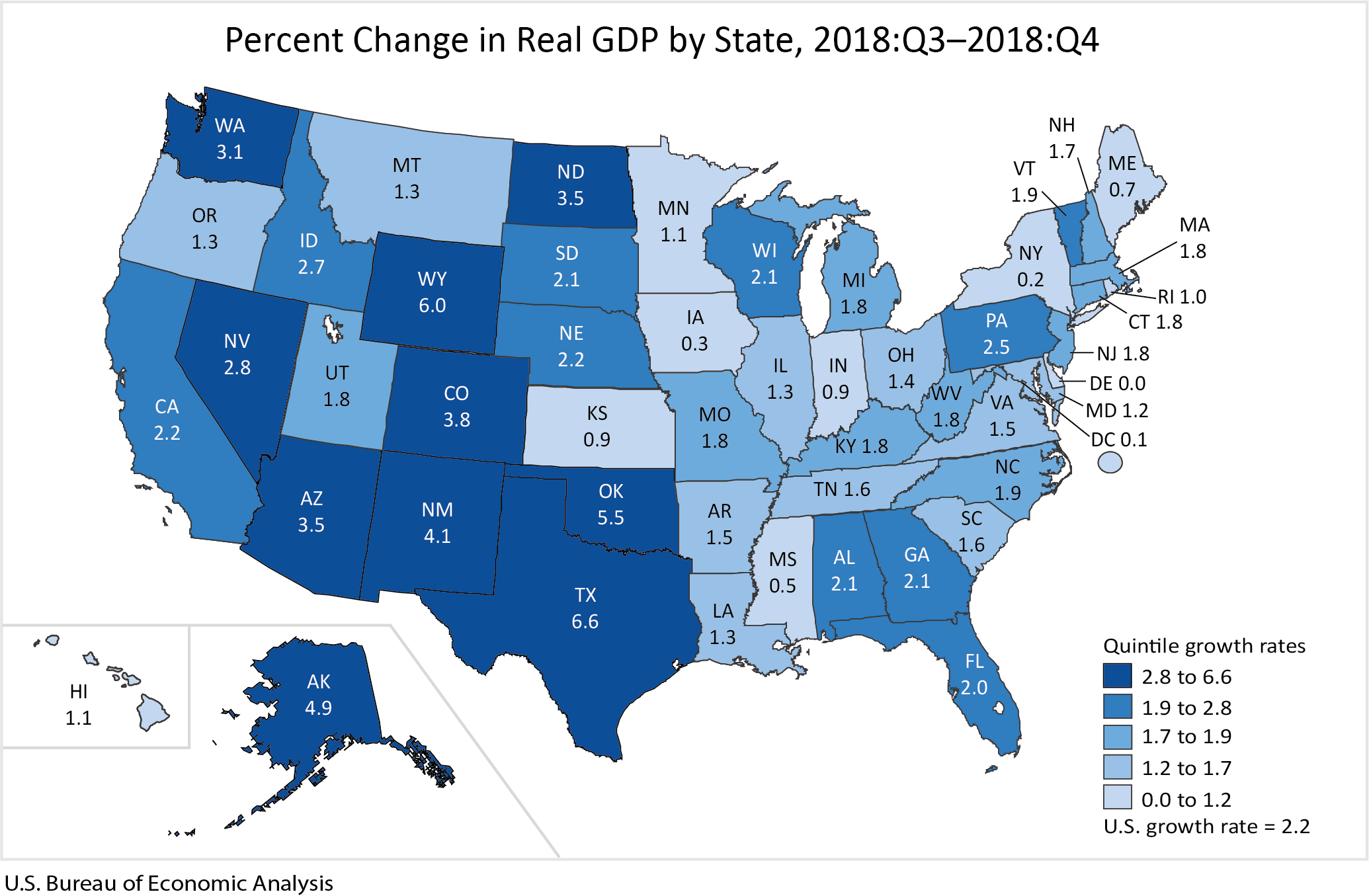The
Providence Journal perpetuates myths, not good economic policy
 Recently, the Providence Journal again
devoted its main editorial to the relatively slow rate of economic growth in
Rhode Island and what to do about it. The title is “A tale of two
economies” and like its namesake, A Tale of Two Cities, it is a work of fiction.
Recently, the Providence Journal again
devoted its main editorial to the relatively slow rate of economic growth in
Rhode Island and what to do about it. The title is “A tale of two
economies” and like its namesake, A Tale of Two Cities, it is a work of fiction.
The Providence Journal
does cite accurate low GDP growth numbers, but the explanation of what they
mean and why they occur is a fantasy. The biggest lie is the myth that low
taxes and little regulation speed up economic growth.
I have called the Journal on this before, and specifically asked for their references and data to prove this point. I have asked editor Ed Achorn several times, I have asked their previous business reporter, I have asked economists and professors of business at the University of Rhode Island (URI) for their data and references when they stand up at public hearings or write columns and pronounce the importance of a good business climate.
No one has ever been able to produce an honest, statistically valid study demonstrating that low taxes and little regulation correlates with rapid GDP growth rates.
I have called the Journal on this before, and specifically asked for their references and data to prove this point. I have asked editor Ed Achorn several times, I have asked their previous business reporter, I have asked economists and professors of business at the University of Rhode Island (URI) for their data and references when they stand up at public hearings or write columns and pronounce the importance of a good business climate.
No one has ever been able to produce an honest, statistically valid study demonstrating that low taxes and little regulation correlates with rapid GDP growth rates.
Kansas
Inc was the Kansas
economic development agency at the time equivalent to Commerce Rhode Island. The report
was removed from the website when Kansas went broke by cutting taxes to
stimulate the economy. In Business Climate
Indexes: Which Work, Which Don’t, and What Can They Say About the Kansas
Economy? There’s the following:
“None of the business climate indexes can explain a large proportion of the variation in growth across counties. The best performing business climate indexes explained at most 5 percent of the variation in relative growth at the borders, suggesting that most of the variation in economic performance is due to factors not captured by state-level business climate measures. This would seem to suggest that business climate is unimportant in driving relative growth among the states. We conclude that the majority of the variation in growth is due to local business factors that affect comparative advantage, local policies, or state policies not reflected in the indexes.”
A more recent study says
the same thing. In Economic Growth
Defies Tax Foundation Ranking, Sven Larsen writes:
“There is no macroeconomic data to show that a ‘good’ business-tax index score is associated with a strong state economy. On the contrary, a review of state GDP data indicates that the opposite might actually be true. Contrary to conventional wisdom, the relationship between taxes and economic growth is not very straightforward…”
The second part of the
equation that the Providence Journal and the business and political classes of
Rhode Island get wrong is how you get rapid economic growth. We have already
demonstrated it is not via low taxes or little regulation.
The best data on rates
of economic growth in the United States comes from the United States Bureau of Economic
Analysis (BEA). They
release data regularly, send out press releases and store it on their website.
The May 1 release is a typical example of quarterly data, but they do yearly data as well.
The May 1 release is a typical example of quarterly data, but they do yearly data as well.
“Real gross domestic product (GDP) increased in 49 states and the District of Columbia in the fourth quarter of 2018. The percent change in real GDP in the fourth quarter ranged from 6.6 percent in Texas to 0.0 percent in Delaware.”

I want you to look at all the dark blue states on the BEA map, the states in the top 10 in growth rates for the quarter. If you looked at growth rates over the last few years, you would find most of those states among the states with the fastest growth over the last few years.
What do you notice? What strikes me is that they are almost all in the Western half of the country and almost all have large natural resource sectors in their economies.
Ponder this last quote from John Hood:
“No serious person would suggest that state fiscal and regulatory policies are the most important factors affecting state economies, or even that they are large enough to swamp other factors when seeking to explain state-by-state differences in economic performance. Natural resources, geography, climate, and international trading patterns are clearly important.”
In other words the
nature of your natural resource economy has a much bigger
effect on your growth rate than your tax and regulatory climates. So using this
criteria, Rhode Island is never going to have a growth rate in the top half of
the country for more than a quarter or two.
In addition to natural
resources being rapidly depleted, which is called growth, there are two other
situations which encourage rapid GDP growth, situations that do not fit Rhode
Island.
More important is the rapid influx into cities of vast numbers of migrants right off the farm, people who have never really been in the cash economy being displaced from farms by mechanization and ending up in factory and service jobs.
When Rhode Island was experiencing such an influx we were a global economic powerhouse. But it has been 100 years since Rhode Island was a powerhouse, ever since the automobile and fossil fuel electricity generation helped industry move away from rails, canals, and small scale hydro dams running mills.
More important is the rapid influx into cities of vast numbers of migrants right off the farm, people who have never really been in the cash economy being displaced from farms by mechanization and ending up in factory and service jobs.
When Rhode Island was experiencing such an influx we were a global economic powerhouse. But it has been 100 years since Rhode Island was a powerhouse, ever since the automobile and fossil fuel electricity generation helped industry move away from rails, canals, and small scale hydro dams running mills.
The final source of
rapid growth is to be a global megacity enmeshed in finance and entertainment
as well as experiencing rapid immigration off the farm. The result of an
economy based on finance is rapidly growing inequality, a problem in the modern
world that threatens to bring down governments, replacing them with fascists
who cut off immigration and then complain the economy is stagnating.
The real problem in
Rhode Island is not our slow growth rate, we have the growth rate of our peers
in the global economy.
Our problem is that the wealthiest among us and their mouthpieces think we should grow fast and therefore offer up policies that have never worked for the public, but help the rich steal more through giveaways to the rich, like the Fane Tower and fossil fuel scams like the Invenergy plant.
The reality is that if Rhode Island wishes to achieve prosperity for its people and communities it should pay much more attention to the actual climate and its deterioration and tell those touting the business climate to stop telling lies.
Our problem is that the wealthiest among us and their mouthpieces think we should grow fast and therefore offer up policies that have never worked for the public, but help the rich steal more through giveaways to the rich, like the Fane Tower and fossil fuel scams like the Invenergy plant.
The reality is that if Rhode Island wishes to achieve prosperity for its people and communities it should pay much more attention to the actual climate and its deterioration and tell those touting the business climate to stop telling lies.